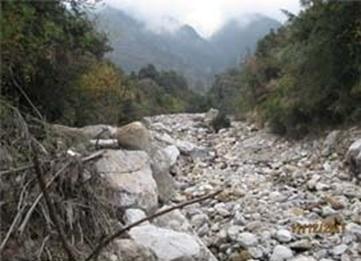Damber Bista
The overall aim of the project is to assess the status of the red panda including their abundance, distribution and conservation threats and initiate the conservation efforts through the engagement of local communities within the Kanchanjungha Conservation Area in Eastern Nepal.

Red panda captured by villagers in Lelep VDC.
The red panda is distributed from Nepal in the west through India, China, Bhutan and Myanmar in the East. Out of two sub species, only the nominate sub-species Ailurus fulgens fulgens occurs in Himalayan region of Nepal. In Nepal, the red panda is a protected species but their numbers are dwindling as intense human pressure affects their habitat. Despite being such an important species, information on this animal from Nepal is scanty. In the case of red panda, the most pressing problem in its conservation is insufficient information regarding its occurrence. The Kanchenjunga Conservation Area (KCA) in Taplejung District of Eastern Nepal represents the high altitude ecosystem. It covers an area of 2035 km2. This area supposed to harbour a healthy population of red panda. Most of the people residing inside the conservation area are farmers and they exert immense pressure upon the forest resources for their subsistence livelihood. A number of threats for the survival of the red panda like forest fire, rotational grazing, slash and burn cultivation, timber and fire wood collection, predation by dogs, natural dying of ringal bamboo species, drought, landslide and lack of awareness are supposed to be existing in the region and mostly of which are human induced in origin. Habitat loss and degradation in mountain forest ecosystems is primarily fatal for red panda and have significant consequences for species with small geographic ranges and are adapted to a narrow range of habitats.

The overall aim of the project is to assess the abundance and distribution of the red panda along with the conservation threats within the Kanchanjungha Area. More, the project also targets to involve community towards the conservation initiatives of the red panda and their habitat. The major activities proposed for this project are community consultation, establishment of blocks and transects, habitat survey, awareness campaign and involvement of community for the sake of conservation of this species by forming red panda conservation committees. More, different groups of people including the women group, youth groups, herders and the members of Community Forest User Groups are targeted for the sensitization. The project is supposed to be helpful in formulating and implementing the conservation activities after identifying the baseline status and existing threats to the red panda within the Kanchanjungha Conservation Area.